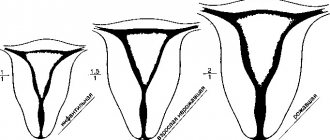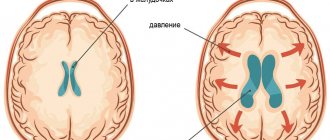General information
Hypoplasia of tooth enamel is one of the forms of non-carious dental lesions, represented by a wide variety of clinical forms of dental tissue pathology.
Non-carious lesions are a fairly common pathology of the dentofacial apparatus in the human population. According to literature data, the incidence of non-carious dental lesions in people who do not work in hazardous industries varies between 10-26%. At the same time, the incidence rate of hypoplasia ranges from 2.1-4%; erosions - 0.9-2.8%; wedge-shaped defects - 2.8-5.5%, pathological abrasion of enamel - 10.7-19.0%. Over the past decades, there has been a clear trend toward an increase in pathologies of this group, which is facilitated by the deterioration of the environmental situation, the growth of substance abuse, and the abuse of certain medications, in particular, hormonal drugs, ergocalciferol , tetracyclines , salicylates , etc.), which determines the significance of tissue pathology non-carious teeth. Non-carious lesions of dental tissues are divided into two large groups depending on the period of their occurrence:
- during the period of follicular development of the tooth - fluorosis , hypoplasia , hyperplasia ; lesions of hereditary origin ( marble disease , Stanton Capdepont syndrome , amelo/ dentinogenesis , etc.);
- after completion of the tooth eruption process - dental hyperesthesia , wedge-shaped tooth defect , erosion of hard tissues , enamel discoloration , trauma.
Of all the forms of non-carious dental damage, we will consider only enamel hypoplasia and wedge-shaped tooth defect .
Hypoplasia of tooth enamel
This pathology is based on insufficient development of enamel/its mineralization (surface layer) of primary/permanent teeth, the extreme manifestation of which is the congenital absence of enamel (aplasia). The pathology is manifested by a change in the appearance/shape of the teeth, the presence of depigmented/whitish areas, depressions, grooves, and in cases of aplasia development - severe pain in response to various types of irritants. Hypoplasia of dental enamel in children is detected to varying degrees in almost half of children of preschool/primary school age and is most often manifested by damage to several teeth. , hypoplasia of the enamel of primary teeth is relatively less common . Histologically, hypoplasia, regardless of their shape, reveals a decrease in the thickness of the enamel/clearness of the contours of the enamel prisms, an increase in the interprismatic spaces. The degree of histological changes is determined by the severity of the pathological process. Below are photos of enamel hypoplasia.
A wedge-shaped dental defect is a local destruction of hard dental tissues in the form of a V-shaped (wedge-shaped) depression on the vestibular surface with a smooth shiny surface (mainly canines, incisors and premolars), accompanied by moderate dental hyperesthesia and an aesthetic defect.
Wedge-shaped defects occur in 20-38% of people, mainly after 40 years of age, but initial manifestations with a high risk of developing enamel defects are often present at a young age. In the absence of timely treatment and the progression of morphological pathological changes against the background of a wedge-shaped defect, there remains a high probability of destruction of the periodontal complex and the development of periodontal disease .
Wedge-shaped defects can occur on all teeth, but occur predominantly on canines, incisors and premolars.
Treatment
The treatment method depends on the shape and severity of the lesion.
Remineralization.
In case of a spot-like defect in a one-year-old child and adolescents, the patient is monitored and, to limit the development of the process, complete remineralizing therapy is performed - applying solutions of sodium fluoride or calcium gluconate. In addition, as prescribed by your pediatrician, you can take vitamins and saturate the enamel with fluoride.
Bleaching.
Performed on patients over 18 years of age after prof. hygiene and remineralizing therapy. This will have a positive effect when locating defects in the surface layer. If there are numerous areas of damage, chemical bleaching cannot be performed.
Filling.
It is used for depressions, violations of coronal integrity and mixed forms of the disease. Photopolymer composites are used.
Prosthetics.
Sometimes, it is more aesthetically pleasing and more durable to cover the vestibular surface of the teeth with veneers, and in case of greater destruction, with crowns. Prosthetics are used at all ages. Installing crowns for children with hypoplasia helps to form the correct bite and diction. If the lesion is severe, it may be necessary to remove the unit, and only from the age of 18 is it possible to install an implant.
Pathogenesis
The pathogenesis of dental enamel hypoplasia is based on a violation of the processes of its formation, which is caused by changes in the structure of the protein matrix of enamel / dentin and disturbances in the process of their mineralization. The pathogenesis of a wedge-shaped tooth defect is based on excessive mechanical load on both the chewing surface of the tooth and the neck of the tooth, as well as stretching of the enamel, which leads to its destruction (cracking) and the formation of a wedge-shaped defect.
The pathogenesis of the wedge-shaped defect is due to the action of force on the enamel in the area of the tooth neck: compression force and tension force. At the same time, the compressive strength of enamel is much stronger than the tensile strength. This contributes to the rupture of intercrystalline bonds of hydroxyapatite and the formation of microdefects in this zone, and subsequently force, mechanical and chemical effects cause an increase in the resulting cracks and the development of a wedge-shaped defect.
What is tooth enamel hypoplasia
Tooth enamel hypoplasia is a specific disease in which the formation and development of enamel due to metabolic disorders does not occur as it should be. As a result of metabolic disorders, the body does not receive all the necessary beneficial microelements, and this contributes to the fact that the enamel becomes vulnerable and very thin. Because of this, the tooth can break even with a slight load.
In addition, hypoplasia indicates serious disorders of protein metabolism and metabolism, so it can not only be called an independent disease, but also a serious sign that the child has certain health problems.
Classification
The classification of dental enamel hypoplasia is based on several factors, according to which various types and forms of pathology are distinguished.
Depending on the prevalence of the pathological process - systemic hypoplasia (pathology of a group of teeth); focal hypoplasia (several adjacent teeth are involved in the pathological process) and local hypoplasia (localized on one tooth).
According to the clinical forms of enamel hypoplasia:
- change in the structure of tooth tissue (grooved, dotted, wavy);
- change in enamel color (spotty);
- aplasia (complete absence of enamel).
Wedge-shaped defects are divided into:
- Multiple (with symmetrical damage to teeth).
- Single.
Causes
Among the causes of hypoplasia at the stage of intrauterine development, one can highlight metabolic disorders directly in the fetus’s body and the impact of external negative factors on the mother’s body, among which the most significant are: Rh conflict in the mother-child system, toxicosis / gestosis , premature birth, trauma during childbirth, ARVI and other infectious diseases suffered during pregnancy ( toxoplasmosis , rubella ), drug abuse, unbalanced diet.
Anomalies in the development of tooth enamel after birth are often caused by encephalopathy , rickets , and atopic dermatitis .
The causes of tooth enamel pathology in adolescents/adults are often endocrine diseases, pathology of the gastrointestinal tract, trauma to the maxillofacial area, lack of microelements/vitamins, and taking tetracycline medications.
The causes of wedge-shaped dental defects have not been fully established. There are several theories of the development of pathology (the theory of mechanical abrasion, chemical erosion, physical and mechanical theory), but none of them is exhaustive. Thus, the mechanical theory is based on the factor of the traumatic effect of a toothbrush on the necks of teeth when brushing with tooth powder.
The chemical theory of the development of a wedge-shaped defect is based on the demineralizing effect of acids, both of exogenous origin (acid-containing foods; acids in dental care products, in particular whitening pastes; medications containing acids) and endogenous origin (acids of gastric juice and those formed during fermentation). food residues in the oral cavity). The physicomechanical theory considers uneven chewing on the teeth during the chewing process as the main cause of the wedge-shaped defect. This can be caused by bruxism , dental anomalies, and dentition defects.
Symptoms
Symptoms vary significantly depending on the prevalence and form of the pathology.
Systemic hypoplasia
Systemic enamel hypoplasia, depending on its severity, can be manifested by its underdevelopment, discoloration, or complete absence.
A change in enamel color manifests itself in the form of symmetrical, various forms of white (chalky) spots located on the teeth of the same name. They are found mainly on the vestibular surface of the teeth and are not accompanied by any painful sensations. At the same time, the outer layer of the affected area of enamel is shiny, smooth, and its color and shape do not change throughout life.
Underdevelopment of enamel is manifested by the presence on the surface of the enamel of alternating small depressions/ridges and stripes located at different levels. The enamel is not damaged. At first, these areas are normal in color, but as the tooth grows, they usually become pigmented. The striated form is especially common, in the form of a hyperpigmented single stripe, often a deep stripe on the crown of the tooth. Sometimes this contributes to a pronounced reduction in the size of the tooth crown. Less common is scalene hypoplasia, which manifests itself as several grooves against the background of the integrity of the enamel.
Enamel aplasia in a specific area of the tooth is relatively rare. The appearance of a pain syndrome against the background of contact with a chemical/physical irritant, which goes away after its elimination, is typical. This type of pathology is characterized by a partial absence of enamel on the crown of the tooth, most often in the groove/at the bottom of the cavity. Often, with enamel aplasia, there is underdevelopment of dentin, which is manifested by characteristic changes in the shape of the teeth:
Pflueger's teeth . The first molars are affected, the size of the crown is uneven - larger at the cheek than at the chewing surface, which makes the teeth look like they have a cone.
Hutchinson's teeth . The pathology is manifested by a change in the shape of the upper central incisors to barrel-shaped/screwdriver-shaped. At the same time, the size of the neck of the tooth is larger than that of the cutting surface with the formation of a semilunar notch at the cutting edge.
Fournier's teeth . They have a similar appearance to Hutchison's teeth, but there is no semilunar notch.
Fournier's teeth
Local enamel hypoplasia
They occur predominantly on permanent teeth against the background of mechanical trauma/involvement of tooth buds in the inflammatory process. Clinically manifests itself as yellowish-brown/white spots or pinpoint depressions located over the entire surface of the enamel.
Wedge-shaped defect
Clinical symptoms are determined by the stage of development of the pathology. It is customary to distinguish four stages of development of the pathological process:
- At the first stage, clinical manifestations are not detectable with the naked eye (that is, there is no loss of tissue visible to the eye). Initial manifestations can only be identified with a magnifying glass. Often, patients at this stage are concerned only with an aesthetic issue: the presence of a defect in the neck of the tooth, in which food debris is retained. Sometimes patients complain of increased sensitivity to external (chemical) irritants.
- At the second stage, superficial wedge-shaped defects with a depth of up to 0.2 mm and a length of 3-3.5 mm are determined in the form of crevice damage to the enamel in the area of the enamel-cement border. There is hyperesthesia of the necks of damaged teeth.
- At the third stage, wedge-shaped defects expand to 3.5–4 mm and deepen to 0.3 mm.
- At the fourth stage, the formation of a wedge-shaped defect is completed, and its length exceeds 5 mm. In this case, there is a combined damage to the deep layers of dentin, often up to the coronal cavity of the tooth and often ends with the destruction of the crown. A wedge-shaped defect is characterized by smooth, shiny edges and a smooth bottom. Possible pigmentation. If left untreated, the neck of the tooth becomes exposed and periodontal disease . May be accompanied by abrasion of the cusps of premolars/molars and the cutting edge of the incisors.
In the vast majority of cases, wedge-shaped defects develop slowly, often over decades. The slow progression promotes the constant deposition of replacement dentin and pain, as a rule, is absent, and the tooth cavity is not directly opened. With an increase in the rate of tissue loss, pain may appear from various types of irritants, and traumatic pulpitis . Wedge-shaped defects are usually not affected by caries. Histologically, a narrowing of the interprismatic spaces is noted, as well as a decrease in the clarity of the boundaries of hydroxyapatite crystals and a decrease in the density of the enamel.
The course of the pathological process is divided into two phases - exacerbation and stabilization. In the stabilization phase, the rate of tissue loss is insignificant, and the process of defect enlargement is almost unnoticeable. In the acute phase, the rate of tissue loss increases, which can be determined visually after 1-2 months. The transition to the exacerbation phase occurs with the development of background pathology.
How to treat
Dental hypoplasia today is considered a process that cannot be cured or reversed. There are no medications that can relieve symptoms. As for the treatment of dental hypoplasia, it is usually symptomatic. It is also possible to reconstruct the tooth enamel.
If the lesions are small, then you can do nothing, since the child or teenager’s teeth will not hurt. If there is erosion on the enamel, or there are deep stains, then the tooth needs to be filled using composite materials.
If there is no enamel on the surface of the teeth, the doctor may prescribe orthopedic treatment or prosthetics. But it is very important to remember that if such a disease or symptoms are identified, it is important to initially consult a specialist. You cannot self-medicate, otherwise serious consequences may occur.
Tests and diagnostics
The diagnosis of “hypoplasia” is based on the patient’s complaints, anamnesis, and data from objective/additional examination methods. It is necessary to find out the period of appearance of the enamel defect (before/after teething in childhood or in adults), the dynamics of the pathology (increase in the number and area of areas). An objective examination determines the number of areas, symmetry, form of pathology and changes in the shape of the teeth.
Diagnosis of a wedge-shaped defect is carried out by visual examination and assessment of dental status. The location of the defect, tissue density, and conical shape are taken into account. A wedge-shaped defect must be differentiated from cervical caries / dental erosion .
Prevention
To prevent the development of tooth enamel hypoplasia/wedge-shaped defect, it is recommended:
- The correct diet/diet of a woman during pregnancy with a sufficient content of calcium, phosphorus, vitamins B, A, D, E.
- Carefully observe oral hygiene, regularly visit the dentist for preventive purposes and, if necessary, carry out regular enamel remineralization therapy.
- Timely removal/treatment of baby teeth in children with chronic apical inflammatory processes.
- Selecting the right dental/oral care products (pastes, toothbrushes, rinses), using the correct teeth brushing technique, avoiding the use of aggressive drinks (based on chemical composition), such as carbonated drinks.
Preventive actions
There are many causes of enamel hypoplasia in children, so it is difficult to prevent this pathology. But if you pay attention to some points, you can significantly reduce the risk of this disease.
Prevention should begin immediately during pregnancy. Giving up bad habits, nutritious nutrition, preventing infectious diseases and taking medications only as prescribed by a doctor can significantly reduce the risk of impaired mineral metabolism in the fetus.
The first year of a child’s life is important in the formation of all systems of his body, including teeth. Good nutrition, prevention of infectious diseases, and taking vitamin D in a prophylactic dosage will prevent irreversible damage to the formation of enamel.
Proper oral hygiene and regular visits to the dentist are the key to strong, healthy teeth.
List of sources
- Groshikov M.I. Non-carious lesions of tooth tissue. ─ M.: Medicine, 1985. - 176 p.
- Dentistry of children and adolescents: Per. from English / Ed. T. Mac Donald, D. R. Avery. - M.: Medical Information Agency, 2003. - 766 p.: ill.
- Mikhalchenko V.F., Aleshina N.F., Radyshevskaya T.N., Petrukhin A.G. Dental diseases of non-carious origin. // Educational and methodological manual, part 1 (non-carious lesions that developed during the formation and mineralization of teeth). - Volgograd, 1998. - 24 p.
- Semchenko I.M. Clinical manifestations of wedge-shaped defects. // Sat. scientific works: Works of young scientists. Anniversary edition. - Minsk, 2001.- p.121-124.
- Lyamzin, S.S. Adequate treatment of wedge-shaped dental defects / S.S. Lyamzin // Dental Market. - 2008.- No. 3. — P.51-55.







